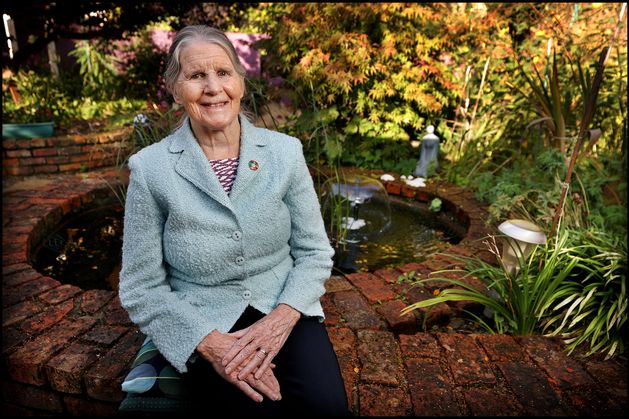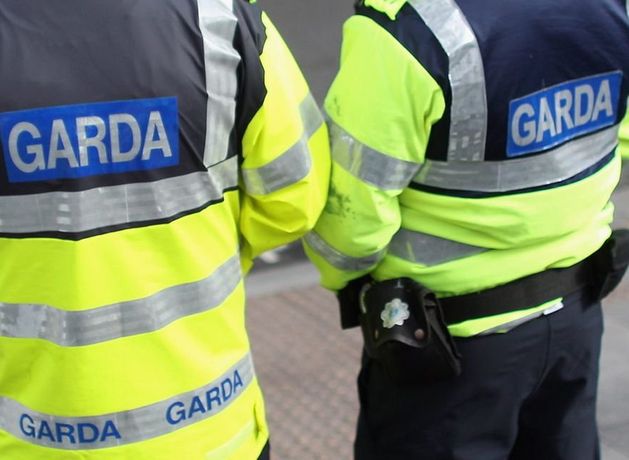Across the West, a vibe shift is occurring. A generation ago, New Atheism was in the ascendancy and previously devout countries were deChristianising.
Something is changing now. The numbers of young people converting to Catholicism is rising sharply in America, Britain and France.
Conservative denominations are attracting more young people than liberal ones, and young men are reversing the traditional religious pattern by leading the return to church. The spot on fashionable bookshelves previously occupied by ‘The God Delusion’ now houses Tom Holland’s ‘Dominion’ instead.
Woke Ireland lags behind though, as it often does. The decline in Catholic affiliation was shown to have accelerated in the last Census, and on current trends only a minority of the population will be calling themselves Catholic in 2035.
The revival of the ‘Faith of Our Fathers’ will surely come in Ireland. Nevertheless, it would help if the bishops and other Church authorities had a plan to hasten that day. Here are some suggested steps which may help.
- When the parish is no longer enough, rediscover the monastic model
There are 1,300 parishes in Ireland, but the parish model is not the only way for a Church to operate.
Prior to the Norman conquest, the Irish Church was much less territorial; as the late Cambridge Professor (Father) Brendan Bradshaw put it, Gaelic Ireland possessed “a monastic rather than diocesan pastoral system.”
Following Catholic Emancipation, it made sense for the Church to spend much of the 19th century building churches so that everyone in the overwhelmingly religious population would have a place of worship within walking distance.
In an era of car transportation, there is no need to have as many churches, many of which are close to empty. As older practicing Catholics – and older priests – go to their eternal reward, there will be little value attached to keeping many of these churches open in situations where there are too few people attending to create a vibrant community.
Yet there are still enough Catholics to maintain a strong religious community in each good-sized town in the country. Rather than looking to maintain every church, it would be better to prioritise a smaller number.
In keeping with the Gaelic monastic model, these communities could have spiritual, educational and charitable elements to them: a catechesis class, a Bible study, a pilgrimage to Knock each year – the sort of things that a parish used to be able to do but now cannot.
Rathmines parish in Dublin is already an excellent example of how this can work, and the development of 100 similar examples nationwide would create a religious sub-culture attractive enough to draw in many people searching for a purpose.
- Fund more research and cultural work on Irish Catholic history
The reason why a dark caricature of Ireland’s Catholic past must be sustained has nothing to do with the alleged victims, or those who lived through the mid-20th century (and who often have fond memories of those days).
Instead, it has everything to do with those who are too young to have remembered it, and who must be taught to fear the prospect that Ireland could once again become a Christian society.
The battle lines are clear and the official stance of RTÉ and the establishment is clear too. It does not matter what official reports say, the truth will be made out to be worse. It does not matter what societal conditions were in evidence, blame for perceived wrongs must always rest with Catholicism.
In a country where no fair hearing will be provided as part of the ordinary media and cultural discussion, the Church needs to do more to tell its own story to its own people.
That means spending real money on historical research and cultural events to document the history of the Irish Church: its heroes and its martyrs, its scholars and its soldiers.
Books should be commissioned, documentary films should be made, and the older generation who remember the past should be given every opportunity to tell their stories before they depart.
- Recreate lost elements of local devotions and tradition
There is a degree of truth in the claim that the post-Famine Irish Church was significantly different to what went before it.
Fresh from achieving Emancipation, Cardinal Paul Cullen and the 19th century hierarchy focused on bringing the Irish Church in line with the rest of European Catholicism, which involved stamping out superstitions and reforming or ending some folk traditions.
This process was not unique to Ireland; Eugen Weber’s magisterial ‘Peasants into Frenchmen’ describes the slow battle to reform the religious practices of the French peasantry.
In Ireland, though, something more was lost, as popular piety had already been damaged by 300 years of Protestant persecution.
The heavy hand of Cardinal Cullen and others was excessive, and ultimately counter-productive in eliminating features of life from which people derived comfort and meaning. As Desmond Fennell put it:
“[The clergy] mounted offensives against the celebrations and excursions on saints’ days which once abounded in the towns and countryside. They attacked crossroads dances, and entertainments for young people in private houses. By every means available to them, they sought to get rid of (not to reform) the traditional festive wake.”
Compared to the incredible religious processions in Italy, Spain and elsewhere, the Irish Church is lacking. The damage cannot be reversed now, but efforts to promote local devotions and local pilgrimages (like the joyous return of St. Brigid’s relic to Kildare in 2024) should be prioritised.
Secular Ireland has nothing to offer, culturally. Five minutes at a multicultural and trans-inclusionary St. Patrick’s Day event tells us this. But under the surface, Catholic Ireland has a powerful allure.
- Withdraw from at least half of primary and secondary schools
The steam has mostly gone out of the effort to end religious patronage in Irish schools, but for reasons which are more destructive to the Faith than mere anti-clericalism.
Many anti-Catholic figures appear to have noticed that the ‘Catholic schools’ are not very Catholic at all, and that immoral beliefs can still be steadily imported in the curriculum as the time dedicated to religious instruction is gradually decreased.
Knowingly or unknowingly, the Church has entered into a corrupt bargain with hostile politicians and unbelieving parents.
The unspoken agreement is that schools will be sufficiently Catholic to allow for Communions and Confirmations to take place, but never so Catholic that they might allow for the religion to be taught clearly and unapologetically. When religious instruction is officially ended and the last few crucifixes are removed, few will even notice.
This is no way to end a proud tradition of Catholic education. Rather than wait to be expelled en masse at an unknown date in future, the Church should identify which schools it needs to maintain in order to allow every Catholic family a choice within reasonable driving distance, and then without further delay, announce its withdrawal from at least 50% of schools.
Bishops will be widely denounced. Popular piety will suddenly break out among parents who do not go to Mass but who are terrified of having to deal with vegan Educate Together activists at parent-teacher meetings.
But within a few years, it will be abundantly clear that Catholic schools are better than the alternative.
With a more manageable number of schools under the Church’s patronage, it should be possible to continue to operate them properly, while ensuring that Catholicism is a core part of each school day.
- Build more university residences
The religious revival taking place is to some extent an intellectual one, driven by young people asking searching questions about the world around them.
For this reason, figures like Jordan Peterson have played a crucial role in enabling this shift to take place.
The core purpose of the college was to foster deep thinking, and most of the more than 250,000 third-level college students in Ireland are at a time in their lives where they have time to think.
In this context, some see the lack of a Catholic university in Ireland as being a deficiency. However, the previous effort to establish the Newman College Ireland was not a success, and it would be a poor use of resources to again try to accomplish as massive a feat as building a university from scratch.
There is a better, more achievable and more affordable option available when it comes to evangelising young people, and that is increasing the number of Catholic university residences operating near our big colleges.
A Catholic residence allows young students to have a supportive home environment while also creating a living bridge between the residence and the broader student body – all without the need to operate under the control of a potentially hostile academic institution.
Some cities already have such residences, but they are often small, and some colleges lack any nearby facilities at all.
With so many Church-owned properties existing in urban areas, it should not be difficult to convert buildings into accommodation centres for a manageable number of students who wish to live in a Catholic residence.
In this and in other areas, the Church needs to demonstrate the attitude of a minority organisation which caters to the needs of its own people first, and prioritises its own mission.
That mission is to bring home lost souls, rather than managing the decline of a bureaucratic Church model which is no longer fit-for-purpose.
The sooner the bishops realise this and act accordingly, the sooner Ireland will exit this long winter and experience the springtime which is being seen elsewhere.





